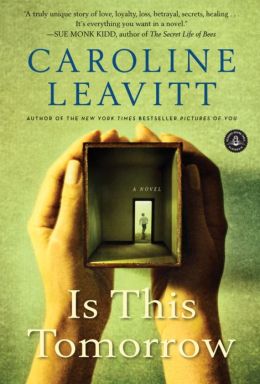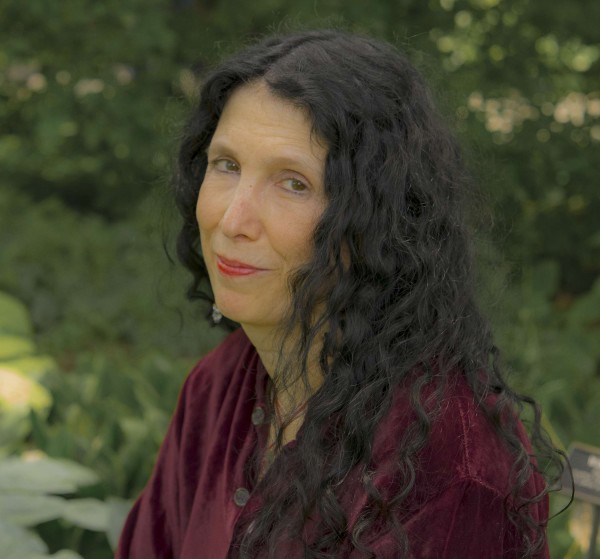When You Can’t Solve a Real Life Mystery, make Up Another
by Caroline Leavitt
For me, writing a novel is always about finding the question that haunts me and then answering it through story. But sometimes, what I set out to write about gets slippery and shape-shifts into something else entirely.
When I was a little girl growing up in what was then the hardscrabble town of Waltham, Mass (it’s now gentrified and full of gourmet restaurants and artisan shops), I always felt like an outsider. I was smart, one of 10% of my class to go on to college, instead of getting married or entering the armed services. I was Jewish where everyone was Catholic, and I was sickly with asthma, when everyone around me seemed to be robust. But there was one other family that was even more of an outcast than I was, and they lived on the corner of my street, in the only rented house in our new development.
Let’s call them the Larks, since that’s the name I use in my novel. The mother was a divorced woman, which back in the sixties, was scandalous. No one, except celebrities, ever divorced. She wore two- piece bathing suits to tan herself in her front yard, while all our mothers wore skirted one pieces with cover ups. She danced to Jazz and had lots of boyfriends, and she had two kids, a girl my age, and a boy three years younger. We kids were told to never go over to her house, that there was rotting food there, that the mattresses were stained with pee, but we always went anyway. We learned that for a cookie, either of the kids would do anything, including your homework or cleaning your room, but I liked the girl. She was my friend, and I gave her cookies and dollar bills because I could.
But then, to our amazement, the wealthy doctor the girl babysat for wanted to adopt her. I couldn’t believe it. I knew you didn’t adopt people who already had parents, did you? And what did it mean if you could? My friend wouldn’t talk about it except to tell me, “I’m doing it.” Two weeks later, my friend left, off to a new life in a wealthier suburb, and a few weeks after that, her mother and her brother vanished.
I kept wondering. What happened to them? What would it be like for the brother, struggling in poverty with an eccentric mom? Did he ever try to find his sister? Did she ever try to convince the doctor to adopt her brother? And what happened to the mother? What must it feel like to give up your own child to another family–and know that that was what she most wanted?
I sat down to write, sure I had a story, and then, to my surprise, it lay like a flounder, gasping for air, on the page. I told myself maybe the problem was I was trying to write a mystery when I never had before. Truthfully, I wasn’t even sure I liked mysteries all that much, since I’m the kind of reader who turns to the end of a book to see how it ends first. (Really. Drives my husband crazy.) But when my last novel, Pictures of You, came out, my publisher, Algonquin Books, tied it to a new Danish series that was just coming out for American TV, The Killing. I figured I should watch it, and to my surprise, I soon got hooked up in the story of Rosie Larsen. Who killed her? Every time you thought you knew, the story would veer and pivot in another direction, leaving me breathless, disorientated, and downright exhilarated.
I started to think harder about my story. I loved the idea of writing about an outsider, and suddenly the 60s didn’t seem like the right eras, so I pushed it back, into the 1950s when everyone was paranoid about Communism and when the suburbs were the American dream. And I began to write through the eyes of the mother, and suddenly, she became sympathetic to me. Suddenly, the book became about fatherless sons and a vanishing boy–not by adoption–but by a mystery. What happened to him? And why did it happen? And what would it do to the other people around him?
I still don’t know what happened to my friend, her brother or her mother. I can imagine scenarios for them, but I don’t have the answer. But I could imagine another mystery, and in solving it, I might not have had real closure to my real life mystery, but I did in my fictional one.
Caroline Leavitt is the New York Times and USA Today bestselling author of Pictures of You and 9 other novels, including her latest, 
Is This Tomorrow. A recipient of a New York Fellowship in Fiction, she was also a recent Sundance Screenwriting Fellowship Finalist. A book critic for People, the Boston Globe and the San Francisco Chronicle, she also teaches novel writing online at Stanford and UCLA. She lives in Hoboken, NJ, with her husband, the writer Jeff Tamarkin and their son. Visit her at www.carolineleavitt.com


